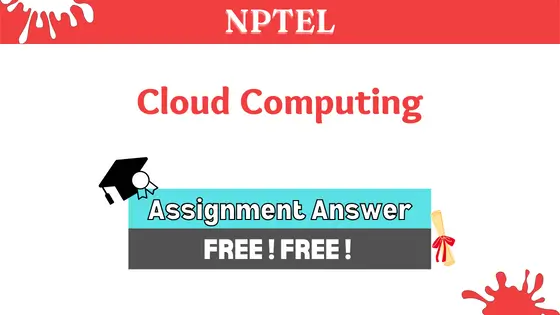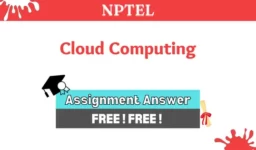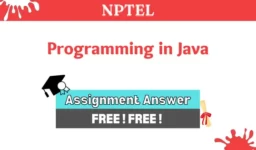
Hello Students, are you looking for help with Cloud Computing and Distributed Systems NPTEL week 5 assignment answers? So, here in this article, we have provided Cloud Computing and Distributed Systems week 5 assignment answer’s hint.
NPTEL Cloud Computing and Distributed Systems Assignment 5 Answers
Q1. Consider the given table of agreement problems and match the correct pair:
| Agreement Problem | Agreement Condition |
|---|---|
| (P) Byzantine Agreement Problem | (i) All processes have an initial value and All non-faulty processes must agree on the same (single) value. |
| (Q) Consensus Problem | (ii) All processes have an initial value and All non-faulty processes must agree on the same array of values A[v₁. . . Vn]. |
| (R) Interactive Consistency Problem | (iii) Single source has an initial value and All non-faulty processes must agree on the same value. |
Answer: c. (P): (iii), (Q): (i), (R): (ii)
1000+ students getting help from instant notifications, Join us on telegram.
Q2. True or False ?
“Pease showed that in a fully connected network, it is possible to reach an agreement if number of faulty processors ‘f’ exceeds (n−1)/3 where n= number of processors”.
Answer: b. False
Q3. True or False ?
“Byzantine agreement cannot be reached among three processors if one processor is faulty”
Answer: a. True
Q4. Consider the following statements:
Statement 1: In the synchronous system model, consensus is impossible to solve.
Statement 2: In the asynchronous system model, consensus is solvable.
Statement 3: Paxos provides safety and eventual liveness.
Answer: d. Only statement 3 is true
Q5. Find out the correct model for the given assumptions of a system:
Assumption 1: Each message is received within bounded time.
Assumption 2: Drift of each process’ local clock has a known bound.
Assumption 3: Each step in a process takes lb < time < ub , where lb represents lower bound and ub represents an upper bound.
Answer: b. Synchronous distributed system
Q6. True or False ?
“Koo-Toueg algorithm is a uncoordinated checkpointing and recovery technique that takes a consistent set of checkpointing and avoids domino effect and livelock problems during the recovery”
Answer: b. False
Q7. Messages whose ‘send’ is done but ‘receive’ is undone due to rollback are called_________________.
Answer: b. Lost messages
Q8. Cascaded rollback which causes the system to roll back to too far in the computation (even to the beginning), in spite of all the checkpoints is known as_______________________.
Answer: c. Domino Effect
Q9. Messages with ‘receive’ recorded but message ‘send’ not recorded and do not arise if processes roll back to a consistent global state are called_________________________.
Answer: c. Orphan messages
Q10. The ____________________may arise when a process rolls back to its checkpoint after a failure and requests all the other affected processes also to roll back.
Answer: d. Livelock problem
| TELEGRAM FOR NOTIFICATION | Click Here |
| Follow on Google News (in one click) | Click Here |
Disclaimer: These answers are provided only for the purpose to help students to take references. This website does not claim any surety of 100% correct answers. So, this website urges you to complete your assignment yourself.
Also Available:
NPTEL Cloud Computing and Distributed Systems Assignment 4 Answers




